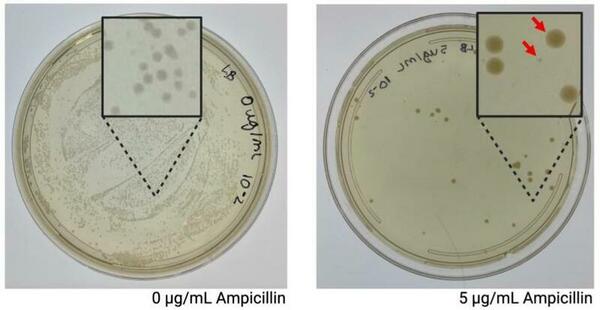Investigating facilitated biofilm formation in Escherichia coli exposed to sublethal levels of ampicillin
(1) Milton Academy, Milton, Massachusetts
https://doi.org/10.59720/22-212
Communities of bacteria known as biofilms occupy surfaces to provide protection against environmental threats, including antibiotics. Biofilms formed by pathogenic bacteria in vivo, like on surfaces of medical implants, may cause serious infections. The reduced antibiotic penetration due to the presence of an extracellular polymeric substance matrix makes biofilm infections particularly difficult to treat. To investigate biofilm formation in the context of antibiotic treatments, we studied the effects of extended sublethal exposure to the antibiotic ampicillin on Escherichia coli biofilm formation and ampicillin resistance. We hypothesized that low ampicillin concentrations would facilitate biofilm formation by imposing selective pressure, while higher concentrations would eliminate biofilms. We exposed E. coli bacteria grown in LB medium to varying ampicillin concentrations throughout their growth. We quantified bacteria for biofilm formation using an optical density crystal violet assay. Acquired antibiotic resistance was measured after 24 hours of growth. Bacteria grown in low concentrations of ampicillin demonstrated increased biofilm formation over time, in comparison to bacteria selected under no ampicillin or high ampicillin. Measurements confirmed that biofilm-selected bacteria generally demonstrated higher antibiotic resistance than planktonic (free-floating) bacteria. Antibiotic exposure favors the more resistant biofilm bacteria, promoting instead of eradicating biofilm formation over time. The selection for biofilm-forming E. coli in ampicillin-present cultures in vitro provides crucial insight into the therapeutic efficacy of antibiotic treatments.
This article has been tagged with: